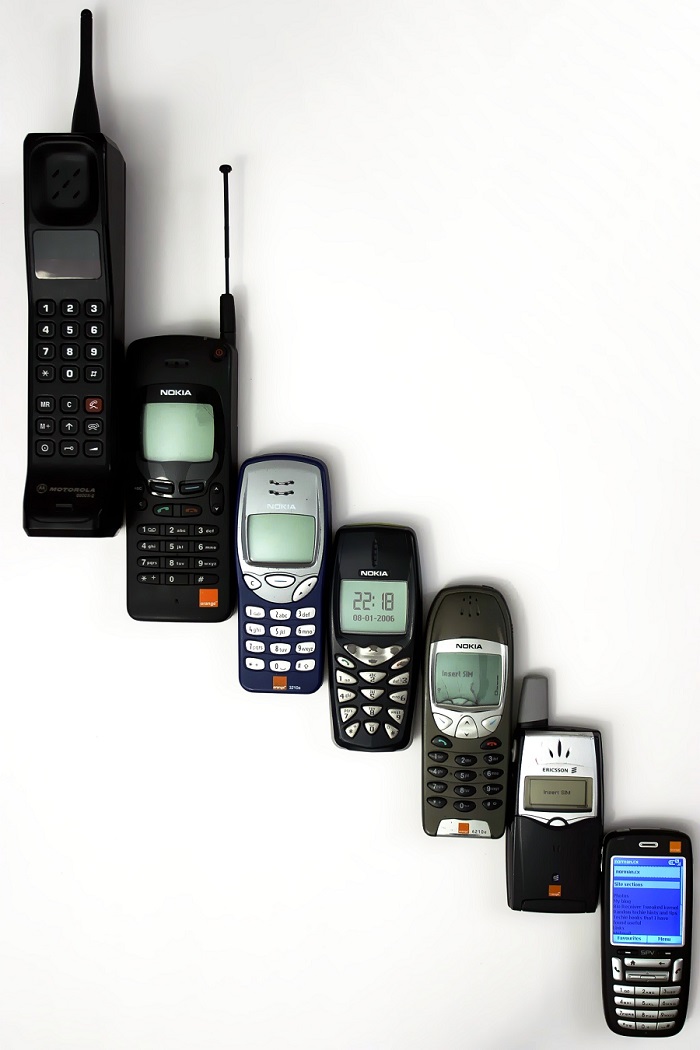As of 2012, an estimated 1 billion smartphones have been activated, which is equal to approximately 15% of the entire world’s population. But where did all of this come from? How did we go from brick phone to smartphone? This blog post will cover a brief timeline of how mobile devices have become a key part of our daily lives.
1983-1989
Mobile phones are becoming more widely used by the average consumer, but cost a small fortune and resemble a brick in shape and weight. (Think Zach Morris’s cell phone in Saved By The Bell)
1999
Personal Digital Assistants (PDA’s) were born and given to executives, or better yet their assistants. This offered users access to addresses, telephone numbers, and calendars on the go. Blackberry became a major leader in the mobile game, gaining their 5 minutes of fame before powerhouses like Apple invade the market. PDA’s were ultimately the beginning of the “mobile workforce”. They gave executives on-the-go information for the first time. Information was not yet accessible via the Internet, only through internal company servers.
2007-2008
Apple and Android launch their newest smartphones. They boasted touch screen features and state of the art content-focused applications. In response to these new, modern additions to the mobile phone, businesses started to rely more on mobile technology for internal communication purposes and realized how important quick-to-access information is to customers.
2008
Mobile technology continued to gain traction. With unfathomable growth for smartphones and tablets, thousands of industries made mobility a priority for both internal teams and their customers. With increased carrier speeds and corporations that picked up the tab for mobile payments, mobile services came into their own like never before, including app creators and small businesses.
2010-2012
Mobile technology becomes a part of mainstream culture. New security measures are introduced, namely Apple’s iOS 4’s management API’s, which allowed for further integration into business platforms. This leads to Blackberry being knocked further off the leaderboard of mobile technology leaders.
In 2011 the first iPad was launched and highly praised. This proved that touch tablets were efficient and user-friendly. Tablets soon began to outsell PC sales.
2013
Enterprise mobility becomes a greater priority given the widespread use of mobile phones and tablets in B2B settings. The focus is now shifting to managing the increasing array of devices and networks to provide security, application management, and financial management within the corporation.
Infinity and Beyond…
- Touch-based infrastructures will be a must, and more 3D applications will be available (think, the “shake” feature on iPad and iPhone applications we see today).
- “Wallet technologies” involving mobile payment options, mobile airplane boarding, etc. will become increasingly more utilized.
- Existing voice recognition sites such as Siri will have higher accuracy and will be expanded upon in design and capabilities.
- Laptops will become obsolete, with tablets continuing to displace them.
- Anchored PC’s will be left to creative-based industries that need larger screens with more space for data and design applications.
- More censor-based applications will be available with the ability to measure temperature, chemical, and other various environmental measurements to be made with smartphones and tablets, likely becoming huge players in scientific and medical communities.
- Lastly, wearable technology will be perfected and become more universally used in all business sectors.
Given that mobility certainly isn’t going anywhere, the opportunities for expansion of our current framework seems to be literally endless. Career opportunities in the tech space will continue to grow, and life as we know it will continue to be mobility focused, from our children’s schooling, to healthcare, to the way our highways work.
Where do you see mobile technology heading in the coming years? Do you think it will be more app or hardware focused?
Sources:
https://www.lookout.com/resources/know-your-mobile/mobile-history
http://www.infoworld.com/d/mobilize/the-3-best-mobile-technology-advances-2010-518?page=0,1


Comments are closed.